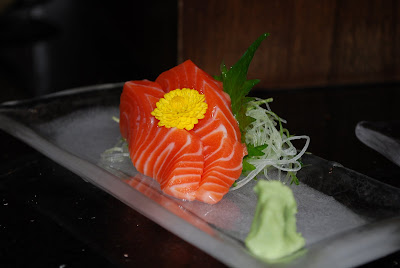
I’ve never given much thought to how soy sauce is made, in fact I’ve only ever dipped my sushi in it, stir fried with it, made Thai dips with it or mashed it into my avo which, by the way, is delicious on crispy toast for breakfast. But here I am, standing in the actual room where Kikkoman soy sauce is matured for six months before being bottled. “It’s very similar to making wine,” explains Mr. Yoshiyuki, our host at Kikkoman. He goes on to say that, “there are over 300 pleasantly flavoured compounds that make soy sauce so tasty.” He is clearly passionate about soy sauce, as he describes the unique characteristics that make up the balanced flavour of saltiness, sweetness and “Umami”. “What exactly is Umami?” I ask Mr. Yoshiyuki. “Umami is Japanese word meaning ‘delicious flavour’,” he enthuses. I later find out that it is one of the five tastes we are able to detect on our tongues, and what could best be described as ‘savoury’, ‘meaty’ or ‘brothy’. Mr. Yoshiyuki is in raptures about the versatility of soy sauce as one of the world’s oldest-known seasoning's and I couldn't agree more.
The origin of soy sauce is hotly debated and many say its origin lies in China, where it was first used some 2500 years ago and came into being almost by culinary accident. Food needed preserving, so people often salted their foods and the resulting liquid (gross as that sounds) was kept and used as a seasoning for other bland dishes such as rice and noodles. It was only when a Zen priest from Japan was studying in China and “borrowed” the idea – basing it on a more vegetarian diet – that the recipe changed to include soybeans. The recipe gradually evolved until the 17th century when the golden liquid that we know today as soy sauce emerged. This evolution is thanks to the efforts of Maki Shige, the wife of a warrior of one of Japan's premier warlords, Toyotomi Hideyori. The first commercial soy sauce brewery was opened in the village of Noda in 1916 by Maki Shige, after she survived the siege of Hideyori’s castle and ran away with the “secret”. Mr. Yoshiyuki goes on to explain, in excellent but slightly broken English, that there are two methods for making soy sauce: “There is natural brewing method and there is cheats method,” he says. “We at Kikkoman use only natural process.” It turns out that there are many chemically hydrolyzed soy sauces on the market which can be made in two days yet contain harsh flavours. Mr. Yoshiyuki is quick to point out that Kikkoman soy sauce is the finest money can buy.
Kikkoman soy sauce is naturally brewed, using an age-old technique with five simple ingredients: Water, Crushed Wheat, Soybeans, Salt and a secret enzyme. These five ingredients are mixed together in state-of-the-art mixing tanks and allowed to “ferment” for around three days. The first part of the process, where the soybeans and wheat are treated under strictly controlled conditions, is called Koji production. The Koji is then mixed with water, salt and “secret enzyme” and the resulting solid mash called Moromi. - All a little technical but fascinating. The sauce is moved into enormous tanks to “ferment” or “brew” – a little like wine making. By now, the yeasty aroma wafting from the tanks is making my tummy rumble. It is this aging period that is crucial in determining the quality of Kikkoman soy sauce.
Kikkoman soy sauce is naturally brewed, using an age-old technique with five simple ingredients: Water, Crushed Wheat, Soybeans, Salt and a secret enzyme. These five ingredients are mixed together in state-of-the-art mixing tanks and allowed to “ferment” for around three days. The first part of the process, where the soybeans and wheat are treated under strictly controlled conditions, is called Koji production. The Koji is then mixed with water, salt and “secret enzyme” and the resulting solid mash called Moromi. - All a little technical but fascinating. The sauce is moved into enormous tanks to “ferment” or “brew” – a little like wine making. By now, the yeasty aroma wafting from the tanks is making my tummy rumble. It is this aging period that is crucial in determining the quality of Kikkoman soy sauce.
The sauce is now ready for pressing. We all follow Mr. Yoshiyuki into the pressing room where the golden liquid is pressed through a huge “linen press” which resembles a giant pasta machine. I ask Mr. Yoshiyuki what type of fabric this is, but again it is a trade secret. Suffice it to say, the liquid soy sauce is now extracted from the Moromi cake by being squeezed through the cloth – a process that cannot be rushed as it is the natural weight of the mash which causes the liquid to be strained through the cloth. Now it all gets a little technical again as the liquid is filtered and then painstakingly analysed for quality before being bottled.
I am in awe; this has been a fascinating tour. We thank Mr. Yoshiyuki for his graciousness, passion and knowledge that he has been so willing to share with us. Our host, Linda, points out that we should feel especially honoured that Mr. Yoshiyuki has hosted our tour, as he is the CEO!



No comments:
Post a Comment